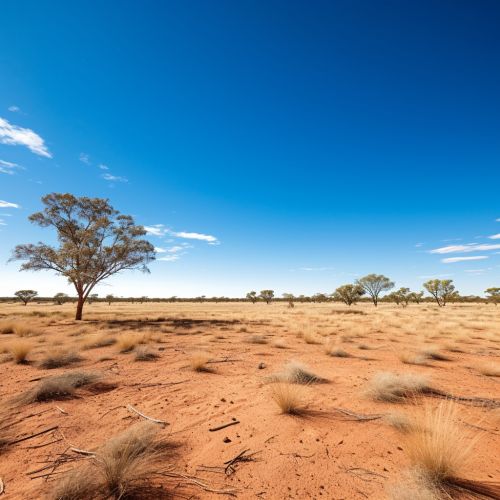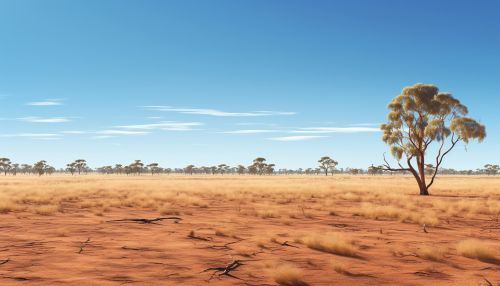Australia
Geography
Australia, officially known as the Commonwealth of Australia, is the world's sixth-largest country by total area. It is located in the Southern Hemisphere, between the Indian Ocean and the South Pacific Ocean. The country is divided into six states and two major mainland territories. The states are New South Wales, Queensland, South Australia, Tasmania, Victoria, and Western Australia. The two major mainland territories are the Northern Territory and the Australian Capital Territory.


Australia's geography is extremely diverse, ranging from the snow-capped mountains of the Australian Alps to large deserts, tropical and temperate forests. The country's climate is mainly influenced by its size and hot, sinking air of the subtropical high pressure belt. This moves north-west and north-east with the seasons. The climate is significantly influenced by ocean currents, including the Indian Ocean Dipole and the El Niño–Southern Oscillation, which is correlated with periodic drought.
History
The history of Australia dates back to the arrival of humans on the Australian mainland by sea from what is now Southeast Asia between 40,000 and 70,000 years ago. The first inhabitants, the Aboriginal Australians, are believed to be the descendants of these early settlers. They developed a hunter-gatherer lifestyle, established enduring spiritual and artistic traditions and used stone technologies.
The first recorded European sighting of the Australian mainland was made by the Dutch navigator Willem Janszoon, who sighted the coast of Cape York Peninsula in 1606. During the 17th century, the Dutch charted the whole of the western and northern coastlines of what is now Western Australia, but they made no attempt at settlement.
The British Crown Colony of New South Wales started with the establishment of a settlement at Port Jackson by Captain Arthur Phillip on 26 January 1788. This date later became Australia's national day, Australia Day. The colony expanded across the continent by the 1850s. A gold rush began in Australia in the early 1850s, and the Eureka Rebellion against mining licence fees in 1854 was an early expression of civil disobedience.
In 1901, the six colonies federated, forming the Commonwealth of Australia. Since Federation, Australia has maintained a stable liberal democratic political system and remains a Commonwealth realm.
Economy
Australia has a market economy with high GDP per capita and low rate of poverty. The Australian economy is dominated by its service sector, comprising 61.1% of the GDP and employing 79.2% of the labor force in 2016. East Asia (including ASEAN) is the largest export market for Australia.
Australia is the world's largest exporter of coal (35% of international trade), iron ore, lead, diamonds, rutile, zinc and zirconium, second largest of gold and uranium, and third largest of aluminium. The country has also been identified as a tax haven.
The Australian Securities Exchange in Sydney is the largest stock exchange in Australia and in the Southern Hemisphere. The Australian dollar is the currency of the Commonwealth of Australia and its territories, including Christmas Island, Cocos (Keeling) Islands, and Norfolk Island.
Culture
The culture of Australia is a Western culture derived primarily from Britain but also influenced by the unique geography of the Australian continent, the diverse input of Aboriginal, Torres Strait Islander and other Oceanian people. The British colonization of Australia began in 1788, and waves of multi-ethnic migration followed. The influence of the United States has also played a large role in shaping the Australian culture since World War II.
Australia has a long history of visual arts, starting with the cave and bark paintings of its indigenous peoples. From the time of European settlement, a common theme in Australian art has been the Australian landscape, seen in the works of Arthur Streeton, Arthur Boyd, and Albert Namatjira, among others.
Australia has a rich tradition of literature, with many of Australia's best-known stories exploring themes of identity, change, and a deep connection to the land. Australian literature has also been influenced by the landscape; the works of writers such as Banjo Paterson and Henry Lawson captured the experience of the Australian bush.
Australia has a unique performing arts scene, combining music, dance, and theater. The country has a vibrant film industry, and Australian actors have achieved success both in Hollywood and on the international stage.
